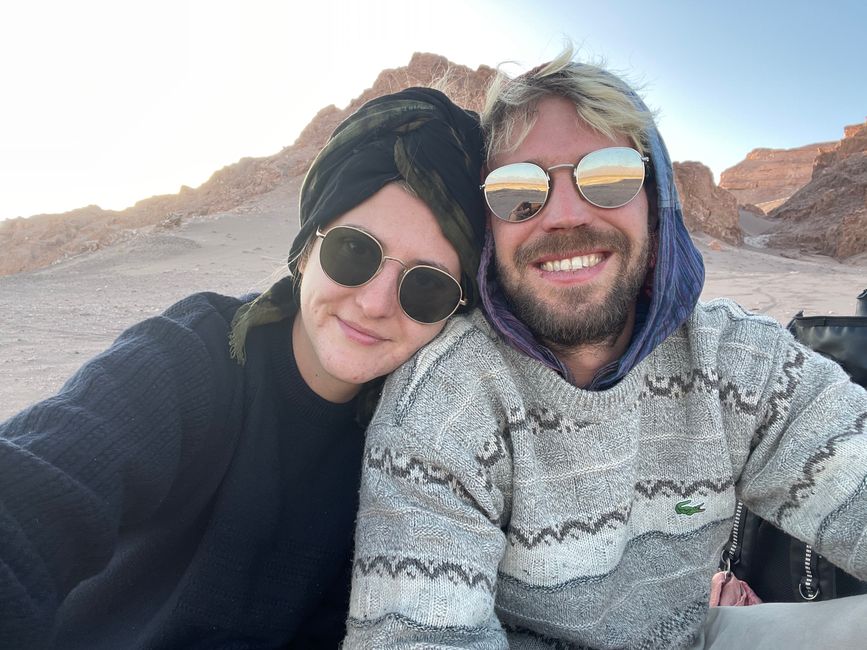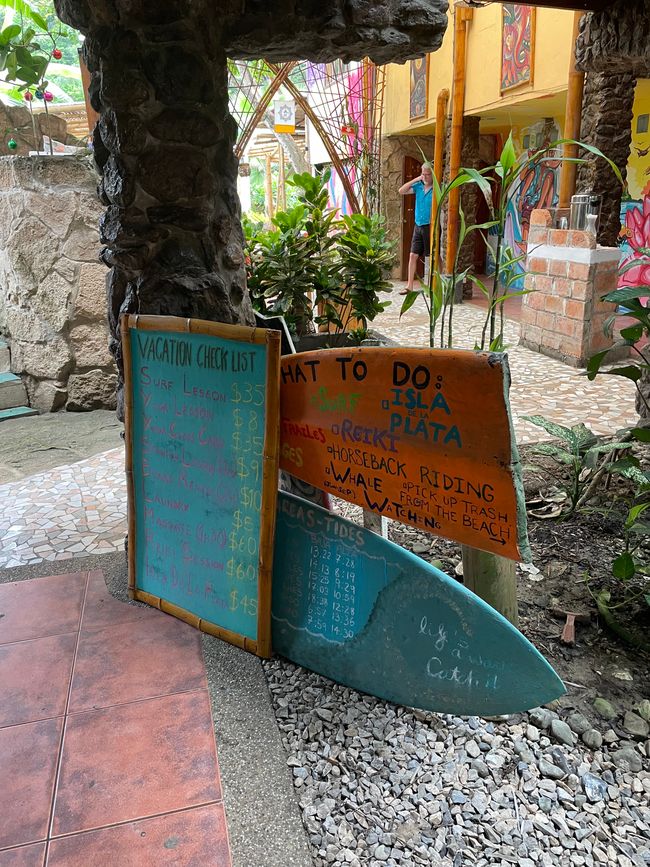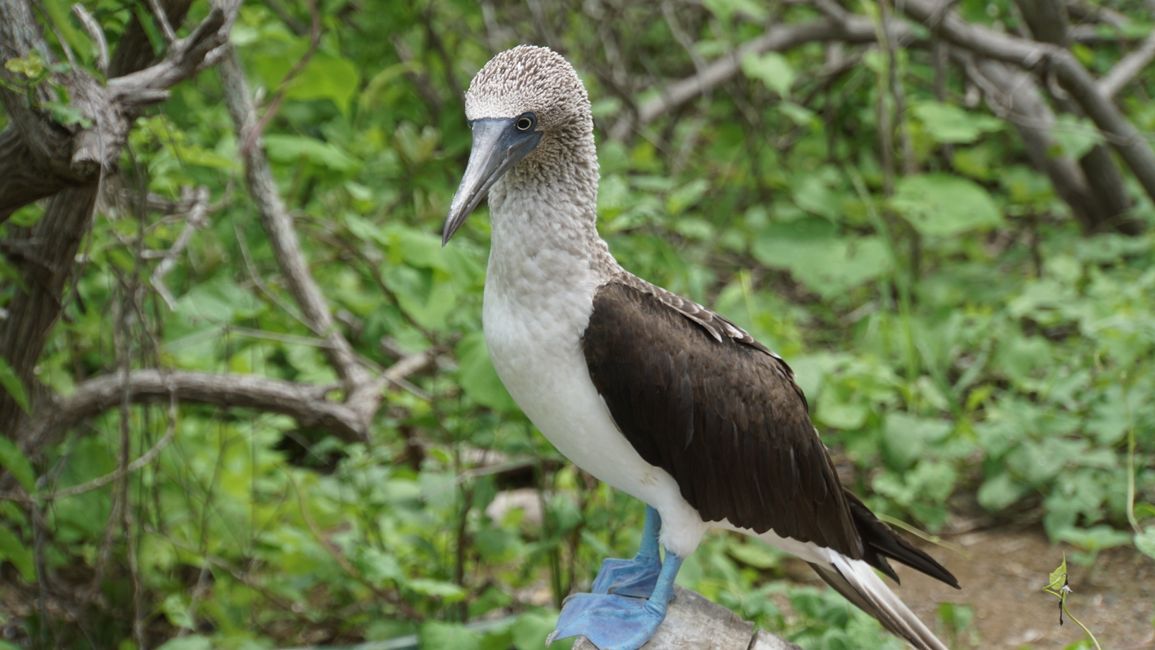
Maria-und-Geralds-Reiseblog
vakantio.de/maria-und-geralds-reiseblog
Along the coast (Ecuador)
Közzétett: 20.03.2023























Feliratkozás a hírlevélre
After crossing the Andes by bus, we arrived in Montañita, a small town on the Ecuadorian coast. For us, it was the most beautiful coast so far, as the green jungle meets the great Pacific Ocean, creating a beautiful contrast.
Montañita is known for its good surfing waves, wonderful beaches, and of course, its nightlife. Since the city itself is full of nightclubs, bars, and restaurants, we chose our accommodation in the north of the city in Punta Montañita. It's generally quieter there, but you can walk to the city center and into the hustle and bustle in 5 minutes if you want to ;)
Our accommodation (Casa del Sol) was a nice surfer hostel 100m from the beach. What better way to start the day than jumping into the sea early in the morning and letting yourself be carried away by the waves. In the evening, you could end the day directly on the beach in one of the nice restaurants and bars, enjoying a magnificent sunset with a few beers. We really liked it there.
In the evening, you could also observe a phenomenon called bioluminescent plankton. The sea here was very nutrient-rich and provided habitat for huge amounts of plankton (microscopic algae that serve as food for many marine animals). These algae absorb sunlight during the day and emit a blue glow through bioluminescence at night. So when the waves break here on the coast at night, they sometimes glow in a radiant blue.
Since we wanted to spend a good two weeks on the coast, we took the opportunity to learn how to surf. We started with the small waves, where we could practice getting up on the board in shallow water. After a few days of independent practice, our teacher took us further out to the bigger waves. There, he explained to us how to observe the waves and the ocean precisely to find the perfect wave, which we found and successfully surfed. An incredible feeling. Now it's all about practicing and practicing even more, never forgetting to respect the sea and not lose the fun.
In addition to surfing, we also continued to explore the coast. We visited the next town, Olon, where we could take long walks on the beach and also surf well.
We also spent two days in Ayampe, further north of Olon, in accommodation in the jungle. Ayampe was a very peaceful little village with natural beaches and two large, characteristic rocks rising from the water off the coast.
Even further north of Ayampe was Puerto López, from where we went on a tour to Isla de Plata, an island 40 km off the coast. This was the breeding ground for a variety of seabirds. We hiked through the green island and could observe the large frigatebirds, the clumsy blue-footed boobies, and many more up close. The large sea turtles also congregated around the island. Finally, we were able to snorkel at a coral reef, where the underwater world presented itself in a colorful display.
Feliratkozás a hírlevélre
Válasz

Ecuador utazási jelentések
